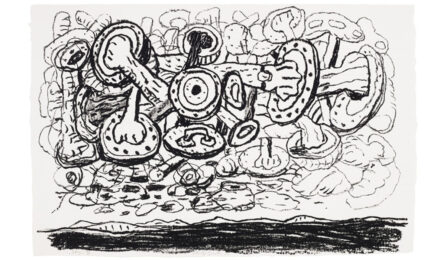


1913-1980
Philip Guston was an American artist of Canadian origin who was born in 1913 in Montreal to a family of emigrant from Odessa, Russia. He died in 1980 in New York.
In the early 1920s, he studied at the Los Angeles School of Art alongside Jackson Pollock, who was his classmate. His first works, made in the United States, are related to his political commitment to the Marxist ideal. In 1934, he created a painting in Morelia, Mexico, dedicated to ‘workers fighting for freedom’. In the late 1930s he was influenced by Max Beckmann and Pablo Picasso, and Guston abandoned realism in favour of allegory.
He won the Carnegie Prize in 1945, but disappointed his early admirers by making his conversion to abstraction after joining the New York avant-garde scene. In New York, he reunited with Pollock and befriended Mark Rothko, Barnett Newman, and Franz Kline. At the same time, he discovered Far Eastern philosophy and aesthetics, and his paintings were inspired by calligraphic art.
On the occasion of his exhibition at the Marlborough Gallery in New York in 1970, he created a sensation by presenting works inspired by the style of comics. Until the end of his life, he painted with his own unique style, which was in-between the sublime and the grotesque.